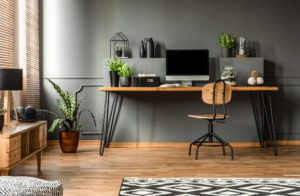How To Install Wainscoting
If you’re reading this article, odds are you’re looking for advice on how to install wainscotting. And rest assured, you’re in the right place.
However, before we walk through each of the steps below, it is important to first ensure you have all the pieces and materials you will need to complete the job.
Check out our Royal Wood Shop Wainscotting Checklist:
Wainscotting Installation: Materials & Supplies
- Beadboard (Choose A Non-warping Option If Installing In A Kitchen Or Bathroom)
- Measuring Tape
- Pencil
- Level
- Stud Finder
- Trim
- Wood Glue
- Circular Saw Or Table Saw
- Chop Saw
- Jigsaw
- Nail Gun Or Hammer
- Nail Driver (Nail Set)
- Paintable Caulk + Caulk Gun
- Wood Filler
- Paint
- Construction Adhesive
- Outlet Extenders
We offer all of the above products you will need to complete the job in store. Visit our store today and speak with one of our knowledgeable sales representatives to ensure you select the right materials.
Now… on to the ‘How To’!
Step One: Prepping the Room
Use a pry bar to remove baseboards from the walls.
If you plan to reuse the same baseboard, first score the top of it with a utility knife to separate the paint from the wall. This will help prevent the paint from peeling off the baseboard.
Remove any outlet covers or light switch covers on the walls within the area to receive the wainscoting. If you need to repair or patch any holes in the upper part of the wall, go ahead and tackle that now. Cover the wall to just below where the top of the beadboard panelling will sit.
Step Two: Measure the Space
Traditionally, the appropriate height of wainscoting follows the design rule-of-thirds. So, for short panelling on a 9-foot ceiling, the top of the panelling would reach about 3 feet high.
Similarly, for higher wainscoting, it would be about 2/3 of the wall, or 6 feet high. However, now that you know the “rules,” also know that it is okay to break them.
Test a few different heights and see what works best in your space. For the optimal visual effect, err on the shorter side, as it creates the illusion of taller ceilings.
As you measure the wall, you will need to account for any light switches and outlets. Measure the distances to determine where each outlet will sit within each panel.
Step Three: Marking & Cutting the Beadboard
Mark the measurements on a panel of beadboard. When measuring for width, try to divide pieces evenly so you’re not left with narrower pieces in a corner, for example.
When marking and cutting the panels, pay attention to the edges. Panels are likely designed to overlap to create a seamless look, so be certain that you are cutting the correct side.
Start in a corner from the left edge of a wall and work around the room clockwise, cutting one piece at a time using a table saw or rotary saw. Use a jigsaw to make cuts for outlets and light switches.
Step Four: Be Sure to Test Fit the Beadboard Pieces
Once you have each piece cut, take a moment to fit it into place (without using adhesive). If it isn’t level at the top, you may need to shim the bottom of some panels.
The bottom edge will be covered with the baseboard, so don’t worry about gaps on the floor. Move on to the next piece only when the fit is correct.
Prep the Beadboard by Sanding and Painting
When the entire room has been fitted, it’s time to sand and paint or stain the beadboard. Prepping each piece before putting it on the wall makes the entire process so much easier.
Step Five: Prep Molding Pieces
Prefabricated moulding pieces are readily available, but for a custom finish, you can also create your own using wood glue and a few pieces of trim.
Use chair rail moulding designed to sit atop panelling. It should have an L-shape in the back to sit flush with the wall and the beadboard.
Trim pieces will need to be specially cut to fit seamlessly into the corners. Use a chop saw or a circular saw with the blade set to make a 45-degree cut.
Step Six: Hanging The Beadboard Wainscoting
Attach beadboard to the wall using construction adhesive and nails.
- First, using a stud finder, locate and mark the center of each stud along the walls.
- Apply a generous amount of adhesive to the back of the first panel and press it against the wall.
- While holding in place, use either a nail gun or a hammer and trim nails to nail the panel into the studs. If you use a hammer, you need to use a nail set to drive the nails down into the board creating a small divot.
- Nail at the top, middle and bottom of each stud.
- Continue around the room gluing and nailing one panel at a time.
Step Seven: Add The Molding
Add the trim using the same basic method as the panelling. Apply construction adhesive to the back of the piece of trim and fit it to the wall, overlapping the top of the panelling.
Use a nail gun or hammer and nail set to attach the chair-rail moulding over top of the wainscoting.
Step Eight: The Final Touches
In order to replace your light and outlet covers, you will first need to bump out the electrical boxes, since the panelling you just installed added thickness to your walls.
Use a screwdriver to detach outlets from the plastic box. Place a couple of plastic outlet extenders on the bolt behind the outlet and reattach.
This should bump your outlet flush with the wall. Repeat for any light switches. Reattach the covers and turn the power back on.
Conclusion
Have questions regarding your installation or would like to speak to one of our contractors?
Feel free to visit our flagship store and see how we can help you finish your project. We are also available to chat to address your questions as you are installing your wainscotting.

